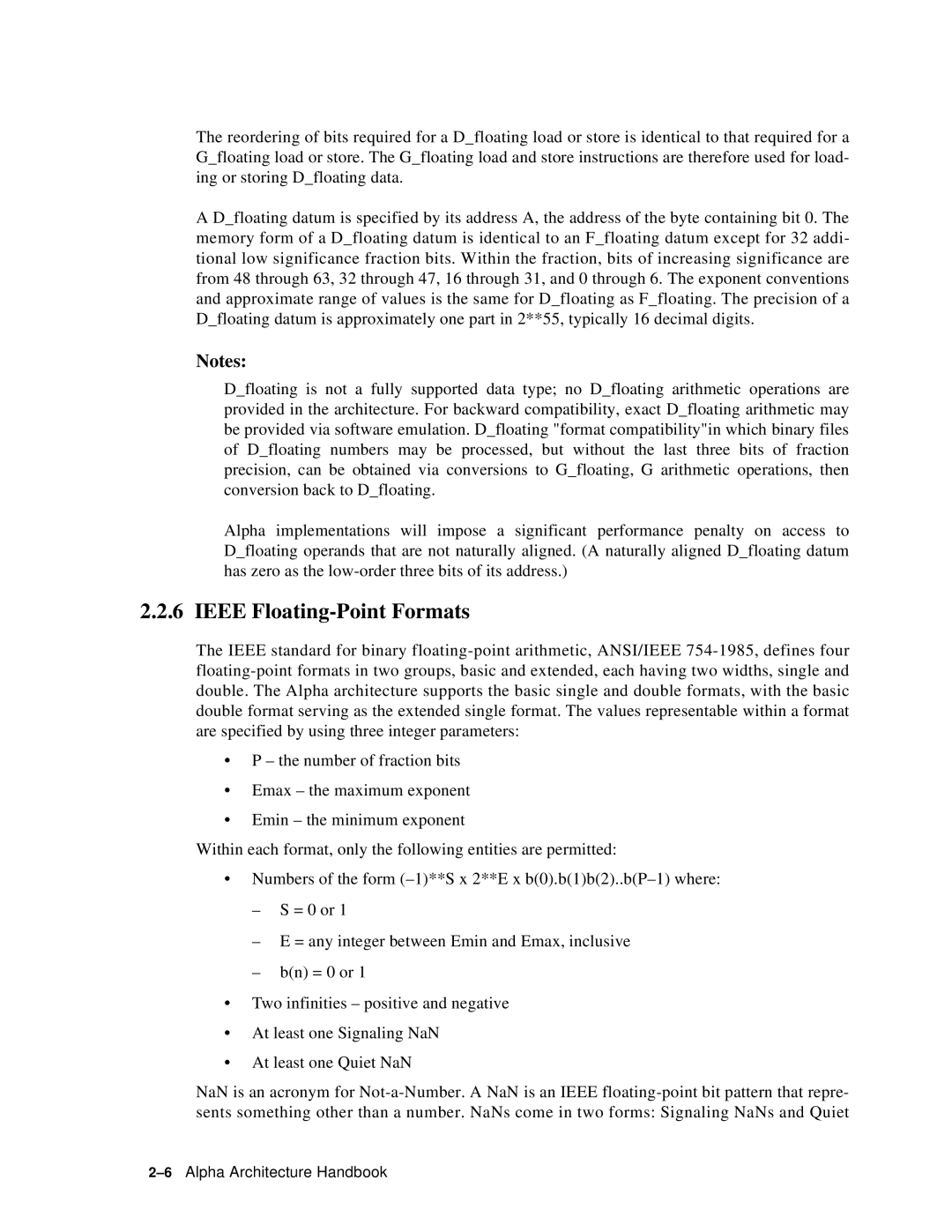The reordering of bits required for a D_floating load or store is identical to that required for a G_floating load or store. The G_floating load and store instructions are therefore used for load- ing or storing D_floating data.
A D_floating datum is specified by its address A, the address of the byte containing bit 0. The memory form of a D_floating datum is identical to an F_floating datum except for 32 addi- tional low significance fraction bits. Within the fraction, bits of increasing significance are from 48 through 63, 32 through 47, 16 through 31, and 0 through 6. The exponent conventions and approximate range of values is the same for D_floating as F_floating. The precision of a D_floating datum is approximately one part in 2**55, typically 16 decimal digits.
Notes:
D_floating is not a fully supported data type; no D_floating arithmetic operations are provided in the architecture. For backward compatibility, exact D_floating arithmetic may be provided via software emulation. D_floating "format compatibility"in which binary files of D_floating numbers may be processed, but without the last three bits of fraction precision, can be obtained via conversions to G_floating, G arithmetic operations, then conversion back to D_floating.
Alpha implementations will impose a significant performance penalty on access to D_floating operands that are not naturally aligned. (A naturally aligned D_floating datum has zero as the
2.2.6 IEEE Floating-Point Formats
The IEEE standard for binary
•P – the number of fraction bits
•Emax – the maximum exponent
•Emin – the minimum exponent
Within each format, only the following entities are permitted:
•Numbers of the form
–S = 0 or 1
–E = any integer between Emin and Emax, inclusive
–b(n) = 0 or 1
•Two infinities – positive and negative
•At least one Signaling NaN
•At least one Quiet NaN
NaN is an acronym for
